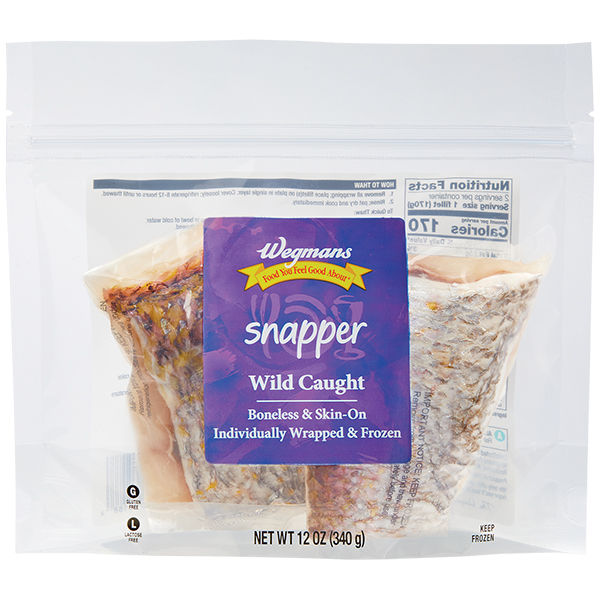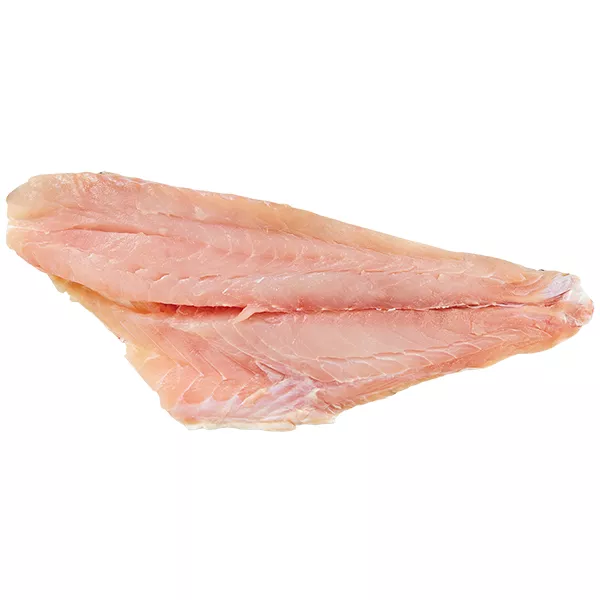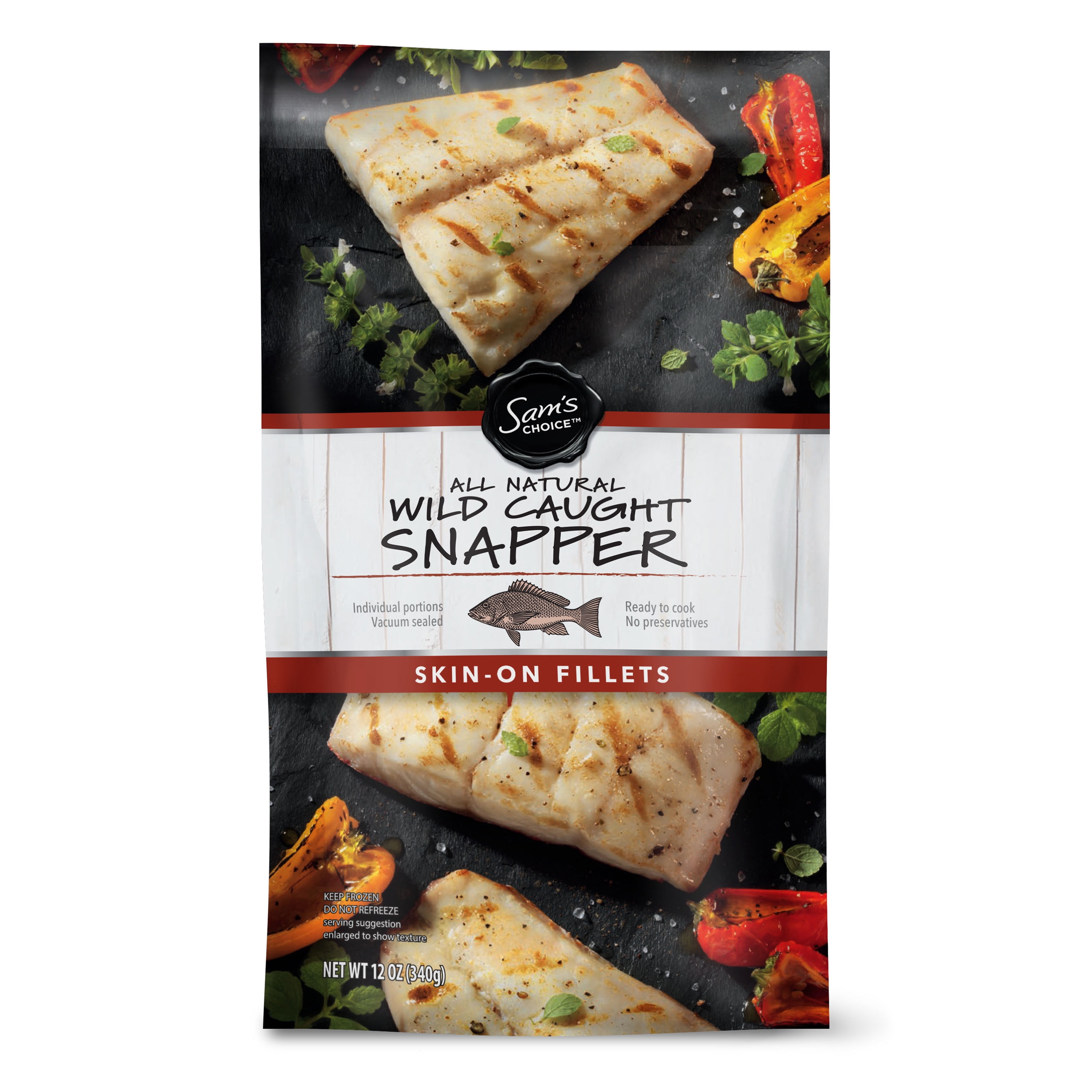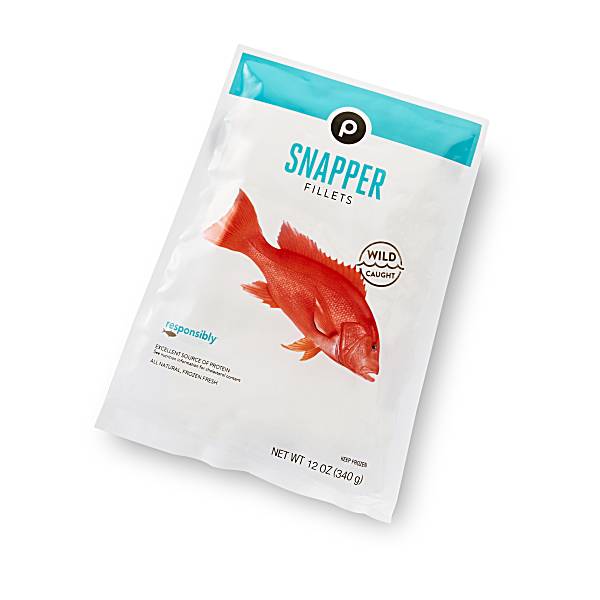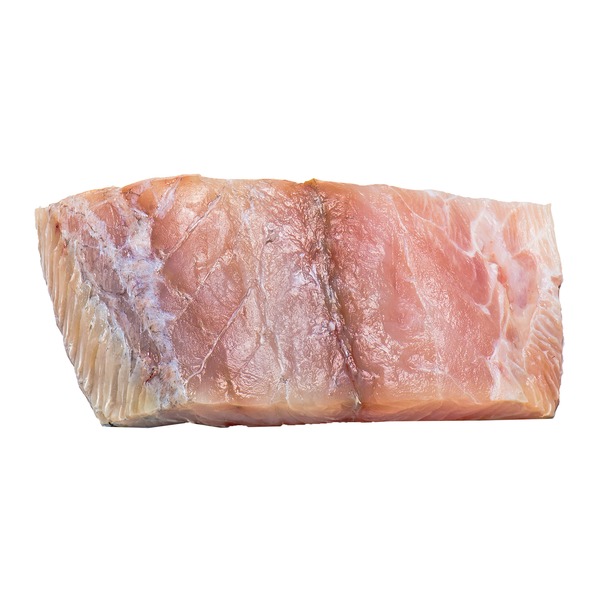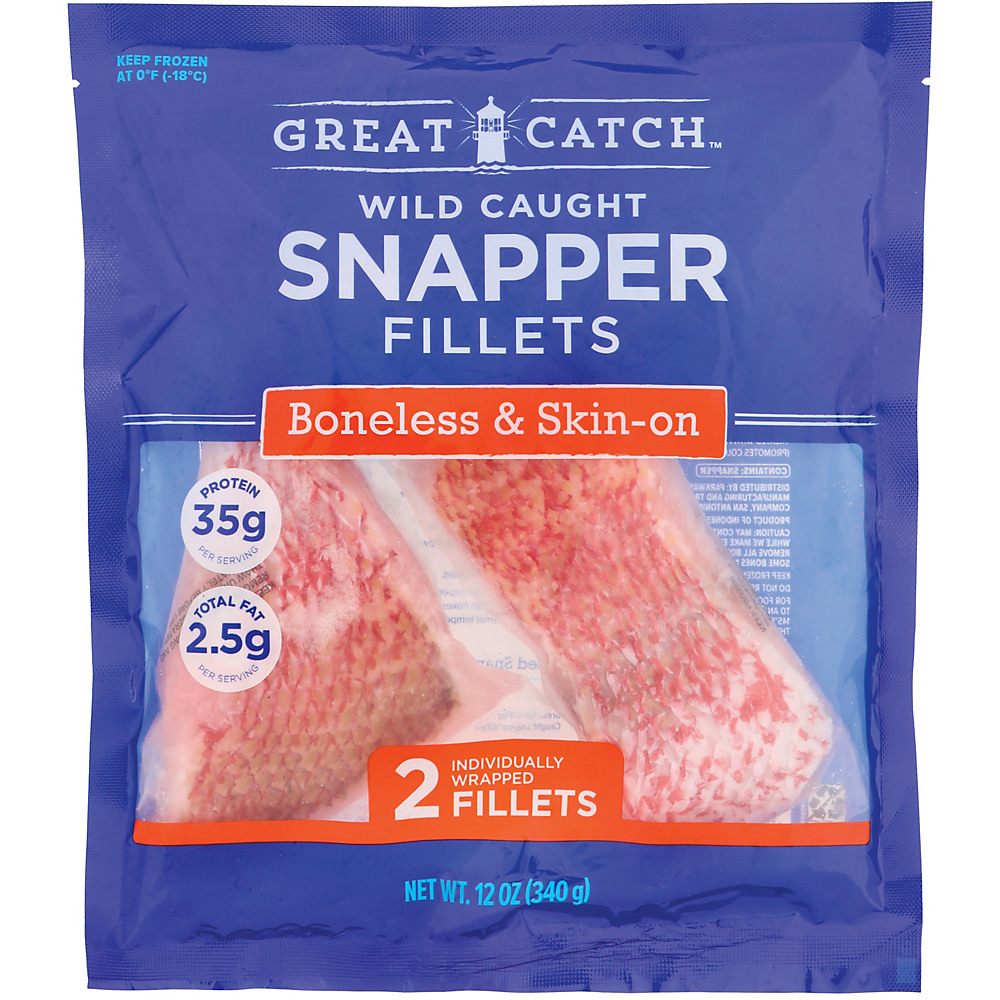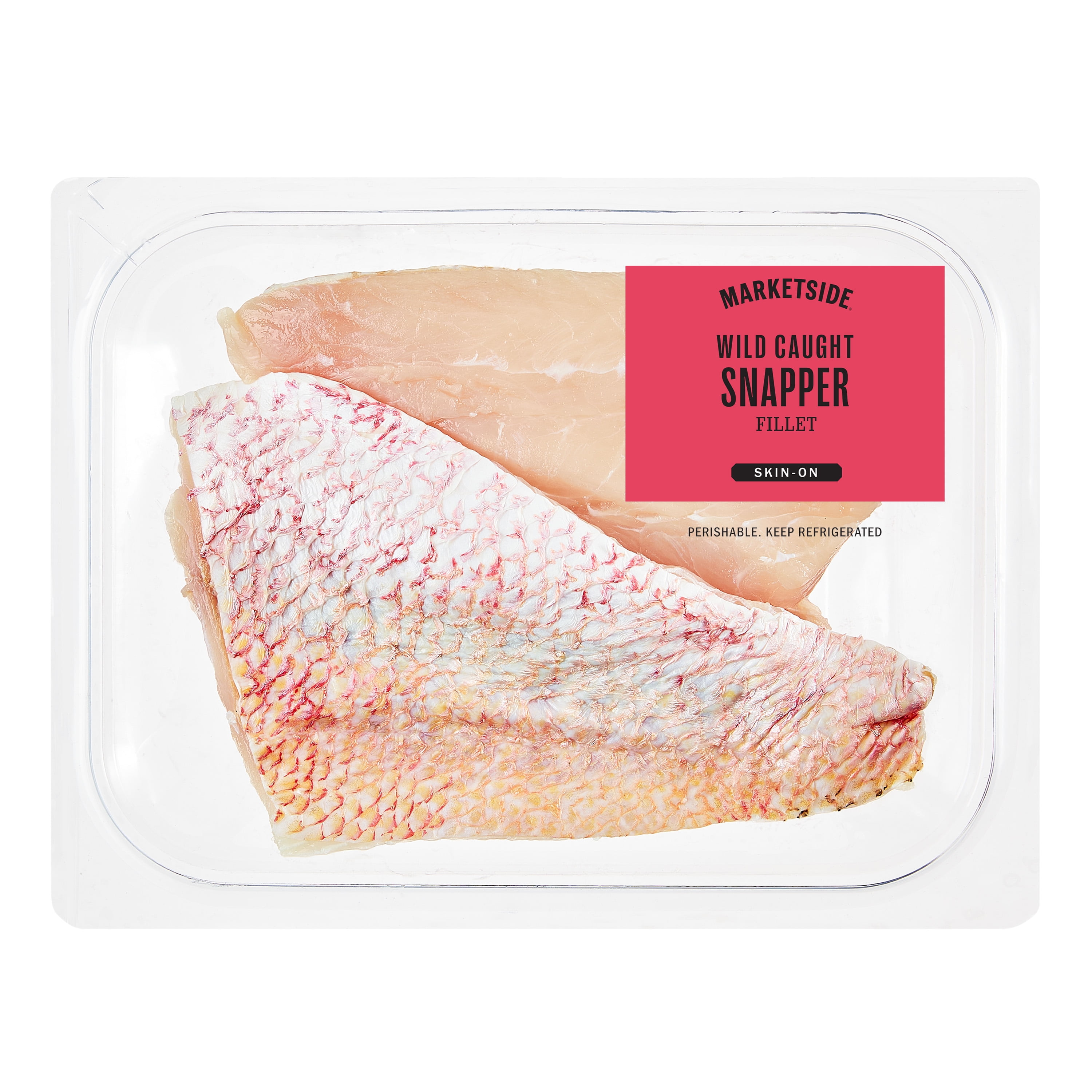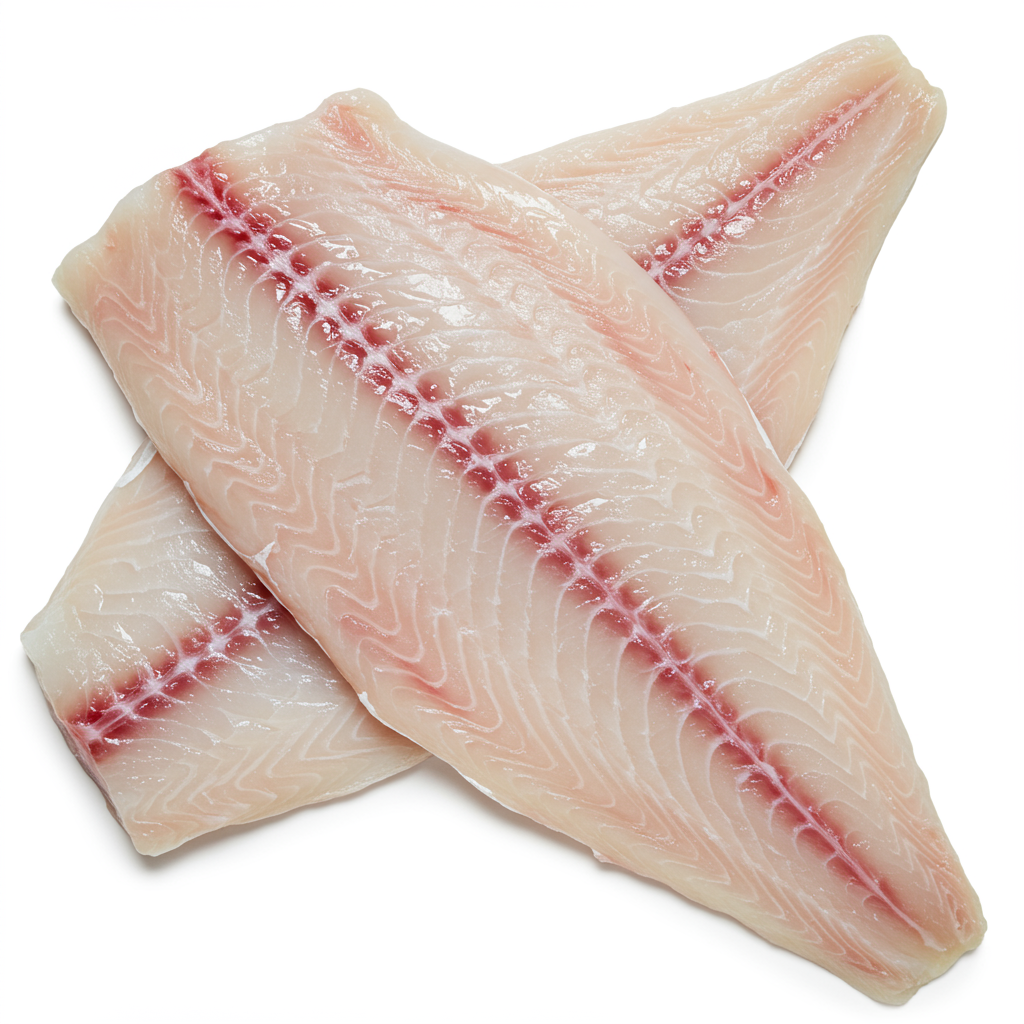MAIN DISHES
SOUPS
SALADS
Snapper
Red snapper is a popular saltwater fish known for its lean, firm white flesh and slightly sweet, nutty flavor. It is a versatile ingredient commonly found in supermarkets and seafood markets. The fish features a vibrant red skin that adds visual appeal to dishes, making it an excellent choice for a variety of culinary applications from grilling and roasting to pan-searing and baking.
As a nutritious option, red snapper is rich in protein, vitamins, and minerals such as vitamin D, selenium, and omega-3 fatty acids. These attributes contribute to its popularity among health-conscious consumers and home cooks who value flavorful, wholesome meals.
0%
CARBS
6%
FAT
94%
PROTEIN
200 Snapper Products
Wegmans Frozen Wild Caught Snapper
Wegmans Fresh Red Snapper
Sam's Choice All Natural Wild Caught Snapper Skin-on Fillets
Publix Snapper Fillets, Wild, Responsibly Sourced, Frozen
Red Snapper Fillets
Private Selection® Frozen Wild Caught Snapper Fillets
Great Catch Frozen Wild Caught Snapper Fillets
Marketside Skin-On Wild Caught Snapper Fillet, 0.75
H-E-B Wild Caught Fresh American Red Snapper Fillet
Marketside Wild Caught Red Snapper
Used In 8 Recipes
Snapper Is Frequently Used With
Snapper FAQ
Red snapper is a flavorful and nutritious ingredient for a variety of dishes. While many people enjoy cooking with it, questions and confusion can arise, particularly regarding its preparation and the best cooking methods to bring out its unique attributes to the fullest.
One common issue is not capitalizing on the flavor and texture of the red snapper skin. The skin of red snapper is edible and, when seared or grilled correctly, can add an extra dimension of flavor and a delightful crispness to the dish. However, the key to achieving this is ensuring the skin is thoroughly dry before cooking and the pan or grill is sufficiently hot. Sprinkling some salt on the skin can also help draw out moisture, making it easier to achieve a nice, crispy skin.
Another concern is overcooking the red snapper. This lean fish can dry out quickly, so it's crucial to use a reliable cooking method and monitor the cooking time closely. Aim for a flesh that's opaque and flakes easily with a fork. Using a food thermometer can be beneficial; the safe minimum internal temperature for fish is 145 degrees Fahrenheit (63 degrees Celsius).
Another tip is to use fresh red snapper whenever possible. Fresh fish tends to yield a superior taste and texture, although frozen snapper, if stored properly, can also be used effectively. Finally, given the delicate flavor of red snapper, it's generally recommended to pair it with light, refreshing accompaniments and seasonings to allow the flavor of the fish to shine.
How do I cook red snapper?
Should I remove the skin before cooking red snapper?
How do I know when my red snapper is done?
Can I pan-fry red snapper?
Is the red skin of the snapper edible?
What kind of seasoning goes well with red snapper?
Can I grill red snapper?
Can red snapper be eaten raw?
Is red snapper a healthy fish to eat?
Can I use frozen red snapper?
Expiration & Storage Tips
When does red snapper expire?
If the red snapper is fresh and kept in the refrigerator, it should ideally be used within 1-2 days of being bought. Beyond that, the fish may not be as fresh tasting but can potentially last for up to 3-4 days if properly stored. On the other hand, a frozen red snapper fillet can last up to 6 months in the freezer before it begins to lose flavor and texture. It’s important to note that the sell-by date on the package serves as a guideline, not a strict rule. Once you open the package or start the defrosting process, the timeline changes, and you should aim to use the fish within 1-2 days.
How do you tell if red snapper is bad?
There are a few tell-tale signs that will indicate if a red snapper has gone bad. A strong, pungent odor is a clear sign that the fish is no longer fresh. Fresh fish should have a mild, briny scent like the sea, not an overpowering fishy smell. The flesh of the snapper should also be firm and resilient to touch; if it feels mushy or leaves an indentation when you press it, it’s likely past its prime. Additionally, observe the color and surface of the fish. If it appears dull or dry, or if it has any slimy coating or discolored patches, it's best to discard it.
Tips for storing red snapper to extend shelf life
• Always store your red snapper in the refrigerator or freezer as soon as possible after purchase. Never leave it out at room temperature for long periods of time.
• Wrap the snapper well in plastic wrap or store in a sealable plastic bag to prevent air from reaching it. This helps slow down the oxidation process which can affect the taste and quality of the fish.
• If you plan on freezing the fish, consider using a vacuum sealer to virtually eliminate air exposure and maintain the best possible flavor.
• Defrost frozen snapper in the refrigerator, never at room temperature. Transferring it from the freezer to the fridge the day before you plan to cook it usually provides ample time for safe defrosting. If you're in a hurry, place the sealed fish in a bowl of cool water to expedite the process.
EXPIRES WITHIN
6 - 11
DAYS
Health Info
Macros
0g
CARBS
2g
FAT
34g
PROTEIN
Allowed on these diets
LOW FAT
HIGH CALCIUM
KETO
PALEO
WHOLE 30
MEDITERRANEAN
LOW CARB
LACTOSE FREE
GLUTEN FREE
Contains these allergens
FISH

